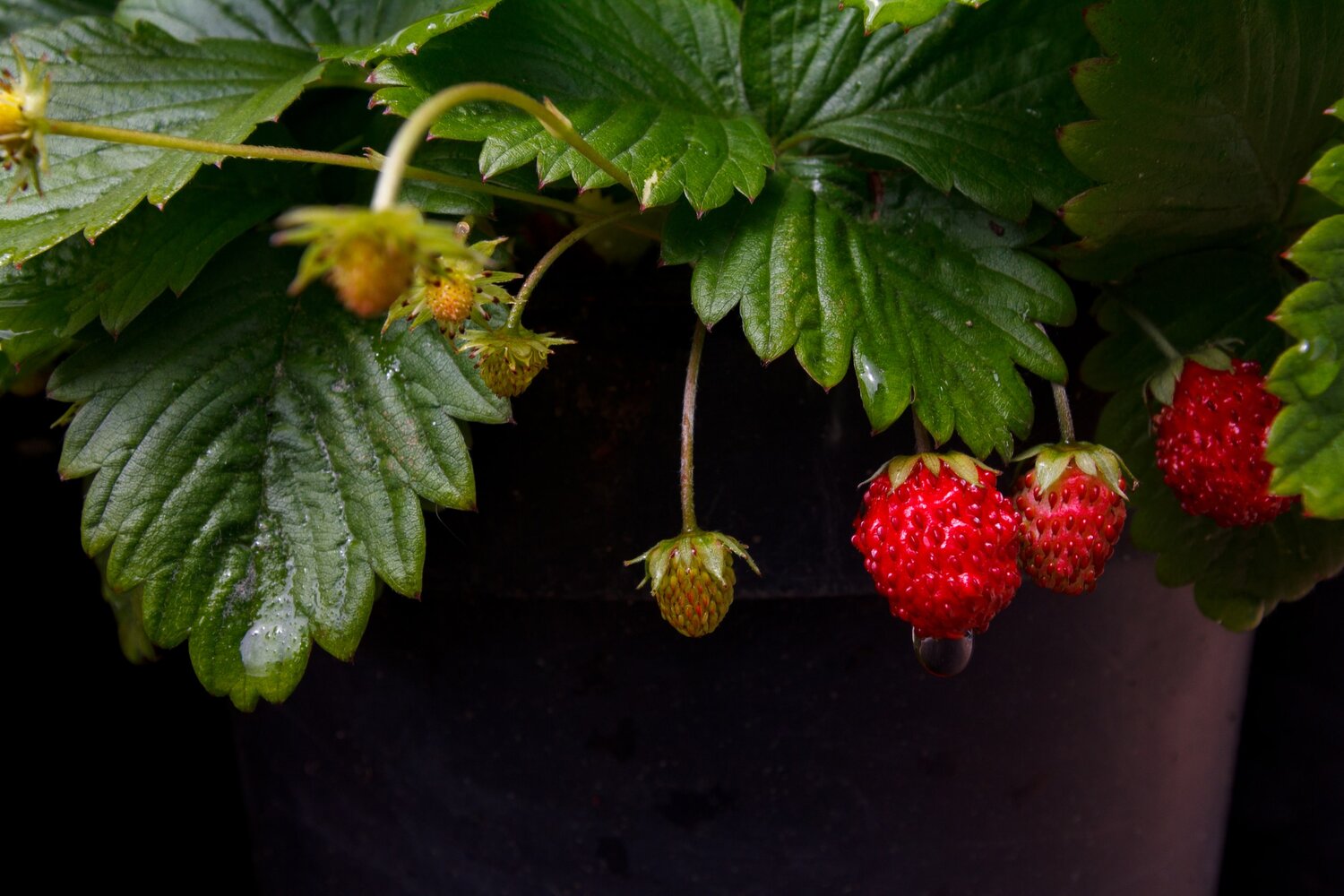Home>Gardening Basics>Understanding Soil>How To Stop Eating Soil


Understanding Soil
How To Stop Eating Soil
Published: February 8, 2024
Learn how to stop eating soil by understanding its composition and effects. Get expert tips to overcome soil consumption habits.
(Many of the links in this article redirect to a specific reviewed product. Your purchase of these products through affiliate links helps to generate commission for Chicagolandgardening.com, at no extra cost. Learn more)
Table of Contents
- Understanding the Compulsion to Eat Soil
- Understanding Pica: Unraveling the Complexities
- Unveiling the Underlying Causes of Pica
- Seeking Professional Help: A Crucial Step in Addressing Pica
- Creating a Supportive Environment: Nurturing Recovery from Pica
- Finding Alternative Coping Mechanisms: Empowering Recovery from Pica
- Conclusion: Nurturing Hope and Resilience in the Journey to Recovery from Pica
Introduction
Understanding the Compulsion to Eat Soil
Soil consumption, a behavior known as geophagy, has been a longstanding practice in various cultures and is often associated with traditional medicinal or cultural beliefs. However, when the consumption of soil becomes compulsive and uncontrollable, it may be indicative of a condition known as pica. Pica is a complex disorder characterized by the persistent consumption of non-nutritive, non-food substances such as soil, clay, chalk, or ice. This behavior is not developmentally appropriate and extends beyond exploratory behavior commonly observed in young children.
While the exact cause of pica is not fully understood, it is recognized as a multifaceted condition that may stem from various factors, including nutritional deficiencies, neurological abnormalities, cultural practices, or psychological stressors. Individuals with pica may consume soil due to cravings or as a coping mechanism for underlying emotional or psychological distress.
Understanding the underlying factors driving the compulsion to eat soil is crucial in addressing this behavior effectively. By delving into the complexities of pica and its potential causes, we can gain insight into the challenges individuals face and explore strategies to provide support and intervention.
Understanding Pica: Unraveling the Complexities
Pica is a complex disorder that transcends mere dietary preferences, delving into the realm of compulsive behavior with potentially severe health implications. While the consumption of soil and other non-food substances may initially appear perplexing, understanding the intricacies of pica is essential in addressing this condition effectively.
One of the defining characteristics of pica is the persistent ingestion of non-nutritive items over a period of at least one month, a behavior that is developmentally inappropriate and not part of widely accepted cultural or social practices. This compulsion often extends beyond childhood and may persist into adulthood, presenting a significant challenge for those affected.
Furthermore, pica is not solely confined to the consumption of soil; individuals may also exhibit cravings for a diverse array of substances, including clay, chalk, ice, and even inedible objects. This broad spectrum of consumption highlights the multifaceted nature of pica and underscores the need for a comprehensive approach to understanding and addressing this complex disorder.
Moreover, pica is frequently associated with various underlying factors, including nutritional deficiencies, such as iron or zinc insufficiency, as well as developmental disorders, such as autism spectrum disorder or intellectual disabilities. Additionally, psychological stressors, such as trauma, neglect, or emotional distress, may contribute to the onset or perpetuation of pica behavior.
By delving into the intricate web of factors contributing to pica, we can cultivate a deeper understanding of the challenges individuals face in overcoming this condition. This understanding serves as a cornerstone for developing effective strategies to provide support and intervention for those grappling with the complexities of pica.
Unveiling the Underlying Causes of Pica
Identifying the underlying causes of pica is a pivotal step in addressing this complex disorder effectively. While the exact etiology of pica may vary among individuals, several common factors have been identified as potential contributors to this compulsive behavior.
Nutritional Deficiencies: One prevalent cause of pica is the presence of nutritional deficiencies, particularly iron, zinc, or other essential minerals. Individuals experiencing these deficiencies may develop cravings for non-food items, such as soil or clay, as their bodies attempt to obtain the nutrients they lack through unconventional means.
Developmental Disorders: Pica has been observed in individuals with developmental disorders, including autism spectrum disorder and intellectual disabilities. The presence of these conditions may increase the likelihood of engaging in pica behavior, necessitating a tailored approach to address the specific needs of affected individuals.
Psychological Stressors: Emotional distress, trauma, neglect, or adverse life experiences can also contribute to the onset or perpetuation of pica. Individuals may turn to the consumption of non-food items, such as soil, as a coping mechanism to alleviate emotional pain or as a means of exerting control in challenging circumstances.
Cultural and Social Factors: Cultural practices and social influences can play a significant role in the development of pica. In certain cultures, the consumption of soil or clay is deeply ingrained in traditional beliefs and may be perceived as a remedy for various ailments. Additionally, social dynamics and peer influences can impact an individual’s propensity to engage in pica behavior.
Neurological Abnormalities: Some research suggests that pica may be associated with neurological abnormalities, although the precise mechanisms underlying this relationship remain the subject of ongoing investigation. Understanding the neurological underpinnings of pica is crucial for developing targeted interventions to address the root causes of this complex disorder.
By shedding light on the diverse array of potential causes contributing to pica, we can gain a deeper understanding of the multifaceted nature of this condition. This understanding serves as a cornerstone for devising tailored interventions that address the specific needs and challenges of individuals grappling with pica.
Seeking Professional Help: A Crucial Step in Addressing Pica
Seeking professional assistance is paramount for individuals grappling with pica, as it facilitates the development of tailored interventions and support strategies to address this complex disorder effectively. Professional guidance and intervention can play a pivotal role in helping individuals navigate the challenges associated with pica and work towards sustainable behavioral changes.
Medical Evaluation: A comprehensive medical evaluation is essential to identify and address any underlying physiological factors contributing to pica. This may involve assessing nutritional deficiencies, conducting laboratory tests, and exploring potential coexisting medical conditions that warrant attention.
Psychological Assessment: Engaging with mental health professionals, such as psychologists or psychiatrists, can provide valuable insights into the psychological aspects of pica. Through thorough assessment and evaluation, individuals can receive personalized support to address emotional distress, trauma, or other psychological stressors that may be driving the compulsion to consume non-food items.
Behavioral Therapy: Behavioral interventions, including cognitive-behavioral therapy (CBT) and dialectical behavior therapy (DBT), can be instrumental in addressing the underlying triggers and reinforcing alternative coping mechanisms. These therapeutic approaches aim to modify maladaptive behaviors, build coping skills, and foster healthier responses to emotional and psychological challenges.
Nutritional Support: Collaborating with registered dietitians and nutritionists can help individuals address nutritional deficiencies and cultivate balanced, nourishing dietary habits. By devising personalized nutrition plans and supplementation strategies, professionals can support individuals in meeting their nutritional needs and reducing cravings for non-food items.
Collaborative Care: Coordinated, multidisciplinary care involving healthcare providers, mental health specialists, and support professionals is crucial for delivering holistic support to individuals with pica. This collaborative approach ensures that individuals receive comprehensive, integrated care that addresses the diverse facets of pica and promotes holistic well-being.
By actively seeking professional help, individuals can access the specialized care and support necessary to navigate the complexities of pica. With the guidance of experienced professionals, individuals can embark on a journey towards healing, empowerment, and sustainable recovery from this challenging disorder.
Creating a Supportive Environment: Nurturing Recovery from Pica
Establishing a supportive and nurturing environment is instrumental in fostering sustainable recovery for individuals grappling with pica. By cultivating an atmosphere of understanding, empathy, and proactive support, loved ones and caregivers can play a pivotal role in empowering individuals to overcome the challenges associated with pica and embark on a path towards healing.
Open Communication: Encouraging open, non-judgmental communication is essential for creating a supportive environment. Individuals affected by pica should feel comfortable expressing their emotions, concerns, and challenges without fear of stigmatization or reproach. This open dialogue lays the foundation for mutual understanding and collaborative problem-solving.
Empathy and Understanding: Demonstrating empathy and understanding is crucial in validating the experiences of individuals with pica. By acknowledging the complexities of this disorder and the underlying factors driving the compulsion to consume non-food items, caregivers can create a safe, non-critical space that fosters trust and emotional well-being.
Education and Awareness: Educating oneself and others about pica can dispel misconceptions and facilitate informed, empathetic support. Caregivers, family members, and friends can benefit from learning about the underlying causes of pica, the challenges it poses, and the available support resources. This knowledge empowers individuals to provide meaningful, informed support to their loved ones.
Establishing Routines and Structure: Consistency and structure can provide a sense of stability and predictability for individuals grappling with pica. Establishing regular meal times, engaging in structured activities, and maintaining a supportive daily routine can contribute to a sense of security and reduce anxiety, potentially mitigating the urge to engage in pica behavior.
Positive Reinforcement: Recognizing and celebrating small victories and milestones in the journey towards recovery is essential for bolstering self-esteem and motivation. Positive reinforcement, such as verbal encouragement, small rewards for progress, and expressions of pride, can instill a sense of accomplishment and reinforce adaptive behaviors.
By fostering a supportive environment characterized by open communication, empathy, education, structure, and positive reinforcement, caregivers and loved ones can significantly contribute to the well-being and recovery of individuals affected by pica. This nurturing environment serves as a cornerstone for building resilience, instilling hope, and fostering sustainable progress in overcoming pica.
Finding Alternative Coping Mechanisms: Empowering Recovery from Pica
Empowering individuals with pica to cultivate alternative coping mechanisms is pivotal in fostering sustainable recovery and promoting adaptive responses to emotional and psychological challenges. By exploring and implementing healthy, constructive strategies to address underlying stressors and cravings, individuals can gradually diminish the compulsion to consume non-food items and embrace more adaptive coping mechanisms.
Stress Reduction Techniques: Engaging in stress reduction techniques, such as mindfulness meditation, deep breathing exercises, and progressive muscle relaxation, can help individuals manage emotional distress and reduce the urge to engage in pica behavior. These techniques promote relaxation, emotional regulation, and enhanced coping skills.
Expressive Arts and Creativity: Encouraging engagement in expressive arts, such as painting, drawing, music, or writing, provides individuals with a constructive outlet for processing emotions and expressing themselves. Creative activities can serve as a form of emotional release and a means of channeling energy into productive, fulfilling endeavors.
Physical Activity and Exercise: Regular physical activity and exercise can contribute to improved mood, reduced anxiety, and enhanced overall well-being. Engaging in activities such as walking, yoga, or dance not only provides a healthy outlet for emotional tension but also promotes the release of endorphins, the body’s natural mood lifters.
Social Support Networks: Cultivating supportive social connections and seeking peer support can provide individuals with a sense of belonging, understanding, and camaraderie. Participating in support groups, connecting with understanding peers, and fostering meaningful relationships can offer invaluable emotional support and reduce feelings of isolation.
Healthy Distractions and Hobbies: Encouraging the pursuit of hobbies and engaging in enjoyable, absorbing activities can divert attention from cravings and provide a sense of fulfillment. Whether it involves gardening, cooking, reading, or engaging in hobbies of personal interest, these activities offer healthy distractions and opportunities for personal growth.
Professional Support and Therapy: Collaborating with mental health professionals and therapists can equip individuals with effective coping strategies and emotional regulation techniques. Therapeutic interventions, such as cognitive-behavioral therapy (CBT) and dialectical behavior therapy (DBT), can empower individuals to develop adaptive responses to stressors and cravings.
By embracing alternative coping mechanisms and integrating constructive, fulfilling activities into their lives, individuals with pica can cultivate resilience, emotional well-being, and adaptive strategies for managing the challenges associated with this complex disorder. Empowering individuals to explore and adopt healthy coping mechanisms is a transformative step towards sustainable recovery and improved quality of life.
Conclusion: Nurturing Hope and Resilience in the Journey to Recovery from Pica
The journey to recovery from pica is characterized by complexity, resilience, and the unwavering pursuit of holistic well-being. By delving into the intricate nuances of pica, unraveling its underlying causes, and fostering supportive environments, individuals can embark on a transformative path towards healing and empowerment. Through the integration of professional interventions, the cultivation of alternative coping mechanisms, and the unwavering support of caregivers and loved ones, individuals grappling with pica can navigate the challenges they face and work towards sustainable recovery.
It is essential to recognize that the journey to recovery is unique for each individual, necessitating personalized, compassionate support that addresses their specific needs and experiences. By embracing a multidisciplinary approach that encompasses medical, psychological, and social support, individuals can access the comprehensive care necessary to navigate the complexities of pica and foster holistic well-being.
Moreover, fostering awareness, understanding, and empathy within communities is instrumental in creating inclusive, supportive environments that nurture the recovery journey of individuals affected by pica. By dispelling misconceptions, promoting education, and fostering open dialogue, we can collectively contribute to the creation of empathetic, informed spaces that empower individuals to seek help and embrace healing.
As we continue to advocate for enhanced awareness, research, and support for individuals with pica, it is imperative to uphold a spirit of hope, resilience, and unwavering dedication to promoting holistic well-being. By nurturing a collective commitment to understanding, empathy, and proactive support, we can foster an environment where individuals affected by pica feel empowered, validated, and supported in their journey towards recovery.
Ultimately, the journey to recovery from pica is a testament to the strength, resilience, and unwavering determination of individuals to transcend the challenges they face and embrace a future characterized by hope, empowerment, and holistic well-being. Through collaborative efforts, informed support, and a steadfast commitment to nurturing the recovery journey, we can collectively contribute to fostering environments where individuals with pica feel understood, supported, and empowered to embark on a transformative path towards sustainable healing.




